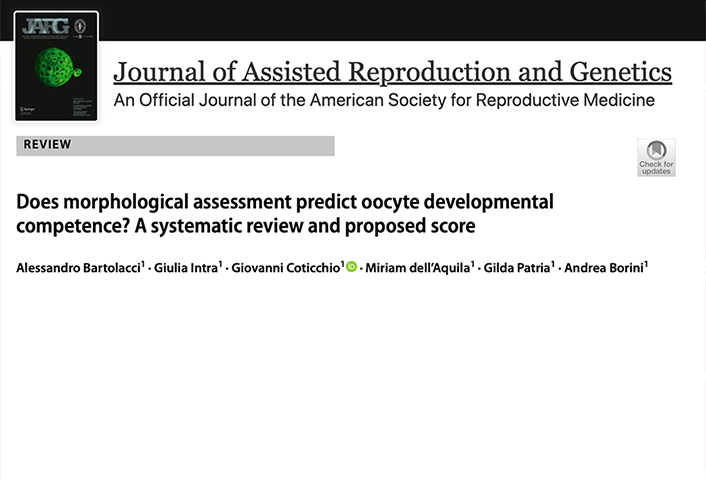
Bartolacci A, Intra G, Coticchio G, dell’Aquila M, Patria G, Borini A.
Journal of Assisted Reproduction and Genetics, doi: 10.1007/s10815-021-02370-3 Received: 22 September 2021 / Accepted: 26 November 2021 / published 7 January 2022 .
Abstract
Purpose: Does existing scientific literature suggest an impact of oocyte dysmorphisms on biological or clinical outcomes of assisted reproduction treatments?
Methods: Studies of interest were selected from an initial cohort of 6651 potentially relevant records retrieved. PubMed was systematically searched for peer-reviewed original papers and reviews identified by keywords and medical subject heading (MeSH) terms. The most relevant publications were critically evaluated to identify criteria for oocyte morphological evaluation and IVF outcomes. For each morphological abnormality, we generated an oocyte literature score (OLS) through the following procedure: (a) papers showing a negative, absence of, or positive correlation between a given abnormality and IVF outcome were scored 1, 0, and – 1, respectively; (b) the sum of these scores was expressed as a fraction of all analyzed papers; (c) the obtained fraction was multiplied by 10 and converted into decimal number.
Result: We identified eleven different dysmorphisms, of which six were extracytoplasmic (COC, zona pellucida, perivitelline space, polar body 1, shape, giant size) and five intracytoplasmic (vacuoles, refractile bodies, SER clusters, granularity, color). Among the extracytoplasmic dysmorphisms, abnormal morphology of the COC generated an OLS of 8.33, indicating a large prevalence (5/6) of studies associated with a negative outcome. Three intracytoplasmic dysmorphisms (vacuoles, SER clusters, and granularity) produced OLS of 7.14, 7.78, and 6.25, respectively, suggestive of a majority of studies reporting a negative outcome.
Conclusion: COC morphology, vacuoles, SER clusters, and granularity produced OLS suggestive of a prevalence of studies reporting a negative outcome.
